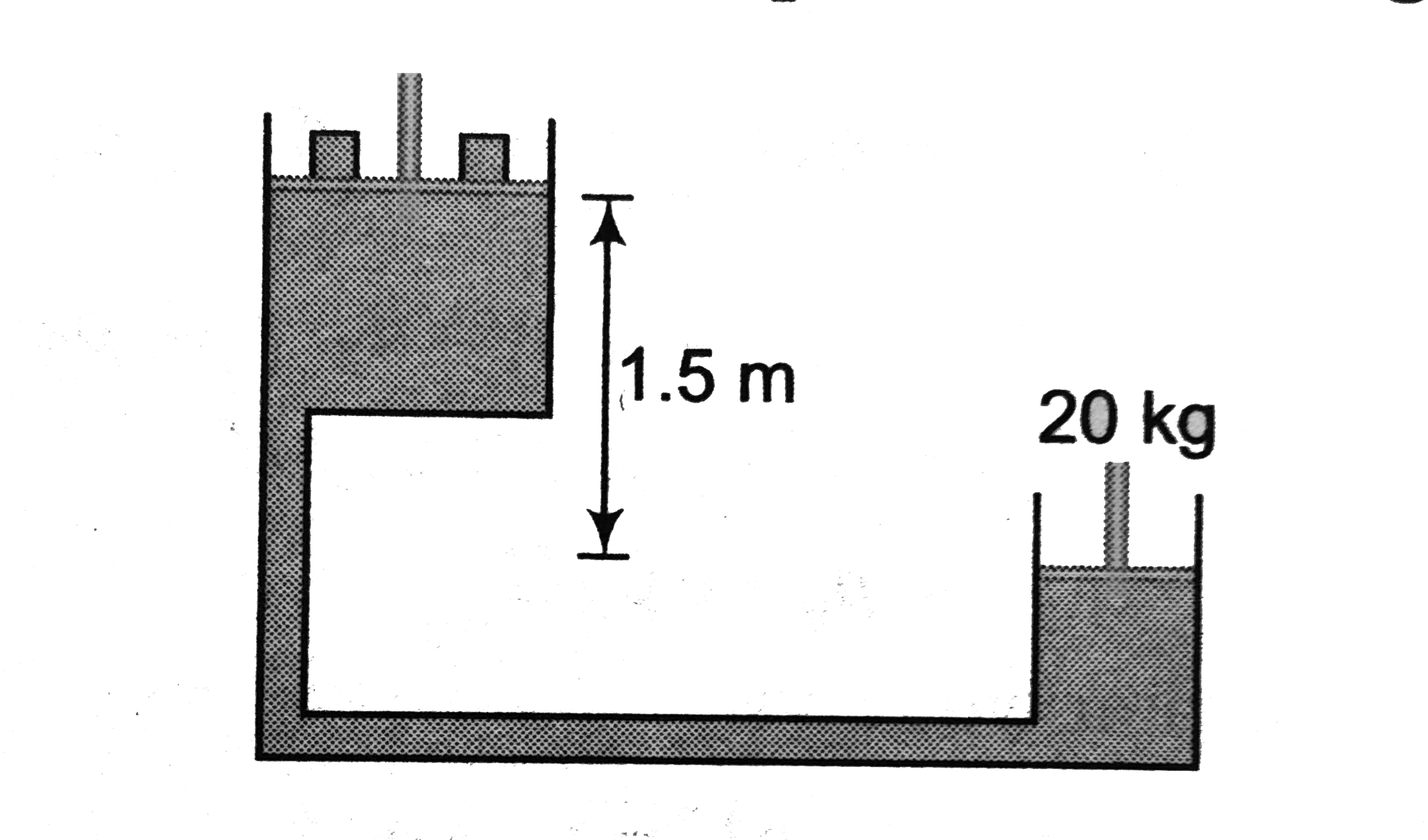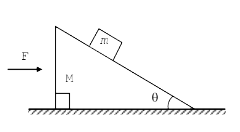(A) : We take smaller steps to walk on wet floor
( R) : To take larger step, larger force is to be exerted on ground, which may exceed limiting friction between floor and foot
Both (A) and (R) are true and (R) is the correct explanation of (A)
Both (A) and (R) are true and (R) is not the
(A) is true but ( R) is false
Both (A) and (R ) are false
The correct Answer is:A
To solve the question, we need to analyze both the assertion (A) and the reason (R) provided.
1. Understanding the Assertion (A):
- The assertion states that we take smaller steps to walk on a wet floor.
- This is a common observation; people tend to be cautious and take smaller steps when the ground is slippery.
2. Understanding the Reason (R):
- The reason provided explains that taking larger steps requires exerting a larger force on the ground.
- If this force exceeds the limiting friction between the floor and the foot, it can lead to slipping.
3. Analyzing the Effect of Wet Floors:
- When the floor is wet, the friction between the foot and the floor decreases.
- Limiting friction is the maximum frictional force that can be exerted before slipping occurs. On a wet surface, this value is lower than on a dry surface.
4. Force and Friction Relationship:
- To walk, a person must exert a force backward on the ground, and friction acts forward to propel the person.
- If a person tries to take a larger step, they need to apply a larger backward force.
- However, if the friction is low (as in the case of a wet floor), this larger force can exceed the available frictional force, leading to slipping.
5. Conclusion:
- Therefore, to avoid slipping on a wet floor, it is safer to take smaller steps, which require less force and remain within the limits of the available friction.
- Thus, both the assertion (A) and the reason (R) are true, and R is a correct explanation of A.
Final Answer:
Both A and R are true, and R is the correct explanation of A.
---
- The assertion states that we take smaller steps to walk on a wet floor.
- This is a common observation; people tend to be cautious and take smaller steps when the ground is slippery.
- The reason provided explains that taking larger steps requires exerting a larger force on the ground.
- If this force exceeds the limiting friction between the floor and the foot, it can lead to slipping.
- When the floor is wet, the friction between the foot and the floor decreases.
- Limiting friction is the maximum frictional force that can be exerted before slipping occurs. On a wet surface, this value is lower than on a dry surface.
- To walk, a person must exert a force backward on the ground, and friction acts forward to propel the person.
- If a person tries to take a larger step, they need to apply a larger backward force.
- However, if the friction is low (as in the case of a wet floor), this larger force can exceed the available frictional force, leading to slipping.
- Therefore, to avoid slipping on a wet floor, it is safer to take smaller steps, which require less force and remain within the limits of the available friction.
- Thus, both the assertion (A) and the reason (R) are true, and R is a correct explanation of A.
Both A and R are true, and R is the correct explanation of A.
Similar Questions
A block is placed at distance of 2m from the rear on the floor of a truck (g=10ms−2). When the truck moves with an acceleration of 8ms−2, the block takes 2 sec to fall off from the rear of the truck. The coefficient of sliding friction between truck and the block is
View SolutionTo avoid slipping while walking on ice, one should take smaller steps because of the
View SolutionA block of mass'm' is resting on the floor of a lift. The coefficient of friction between the block and the floor is μ. When the lift is falling freely, the limiting frictional force between block and surface is
View SolutionFigure shown a hydraulic press with the larger piston if diameter 35 cm at a height of 1.5 cm at a height of 1.5 m relative to the smaller piston of diameter 10cm. The mass on the smaller piston is 20 kg. What is the force exerted on the load by the larger piston? The density of oil in the press is 750kh/m3 . (Take g=9.8m/s2)
 .
.
View SolutionA plank of mass 2kg and length 1m is placed on horizontal floor.A small block of mass 1kg is placed on top of the plank , at its right extreme end .The coefficient of friction between plank and floor is 0.5 and that between plank and block is 0.2 . If a horizontal force =30N starts acting on the plank to the right ,the time after which the block will fall off the plank is (g=10ms−2)
View SolutionA 42 kg slab rests on a frictionless floor A 9.7 kg block rests on the top of the slab as shown in the figure. The co-efficient of static friction between the block and the slab is 0.53, while the co-efficient of kinetic friction is 0.38. The 9.7 kg block is acted upon by a horizontal force of 110 N. What are the resulting accelerations of
(a) the block, and (b) the slab? (Take g=9.8m/s2)

View SolutionIn a rotor, a hollow vertical cylindrical structure rotates about its axis and a person rests against the inner wall. At a particular speed of the rotor, the floor below the person is removed and the person hangs resting against the wall without any floor. If the radius of the rotor is 2m and the coefficient of static friction between the wall and the person is 0.2, find the minimum speed at which the floor may be removed Take g=10ms2.
View SolutionIN a rotor, a hollow verticla cylindrical structure rotates about its axis and a person rests asgainst he inner wall. At a particular speed of the rotor, the floor below the person is removed and the person hangs resting against the wall without any floor. If the radius of the roter is 2m and the coefficient of static frictioin between the wall and theperson is 0.2, find the minimum speed at which the floor may be removed Take g=10ms2.
View SolutionWhen a current through the medium, an electric field exists as well as a potential which varies in space. Suppose that there is a break in a high - voltage transmission line and the free end of a wire of length L is lying on the ground. An electric current flows through the regions of soil adjoining the conductor. If a man happens to be walking near by a potential difference, which is called the step voltage appears between the points where his feet touch the ground, Consequently, an electric current whose strength depends on this potential difference flows through the man.
Let us calculate the step voltage. Since the conductor is quite long, we assume that the current flows from it to the ground in a direction perpendicular to the conductor. The equipotential surfaces are the surfaces of semi-cylinders whose axes coincide with the conductor. Suppose that the man is walking in a direction perpendicular to the conductor with a step of length 'b' the distance between the conductor and the foot closer to it being d. Assuming that the current flows uniformly from the conductor over the semi cylindrical region we obtain the following expression for the current density at a distance from the conductor:
j=iπrL
In this case , the field strength along the radii perpendicular to the conductor is Er=jσ=lπrLσ
Consequently , the step voltage is Vst=∫d+bdEdr=1πσLln(d+bd)
For example , If l=500A , d=1 m , b=65 cm and L=30 m we find that Vst=270 V. Much higher voltages may appear under other conditions and other shapes of conductors.
When a part of a high- voltage transmission line falls on the ground, it creates a hazard
View SolutionA small block of mass m is kept on the inclined surface of a wedge of mass M. The inclined surface of the wedge makes an angle θ with the horizontal. The wedge is kept on a frictionless rigid horizontal floor. You can neglect friction between the block and the wedge also. An external agent applies a horizontal force F on the wedge.

The value of the force F so that the wedge remains at rest is F1. Which of the options is incorrect?
View Solution
